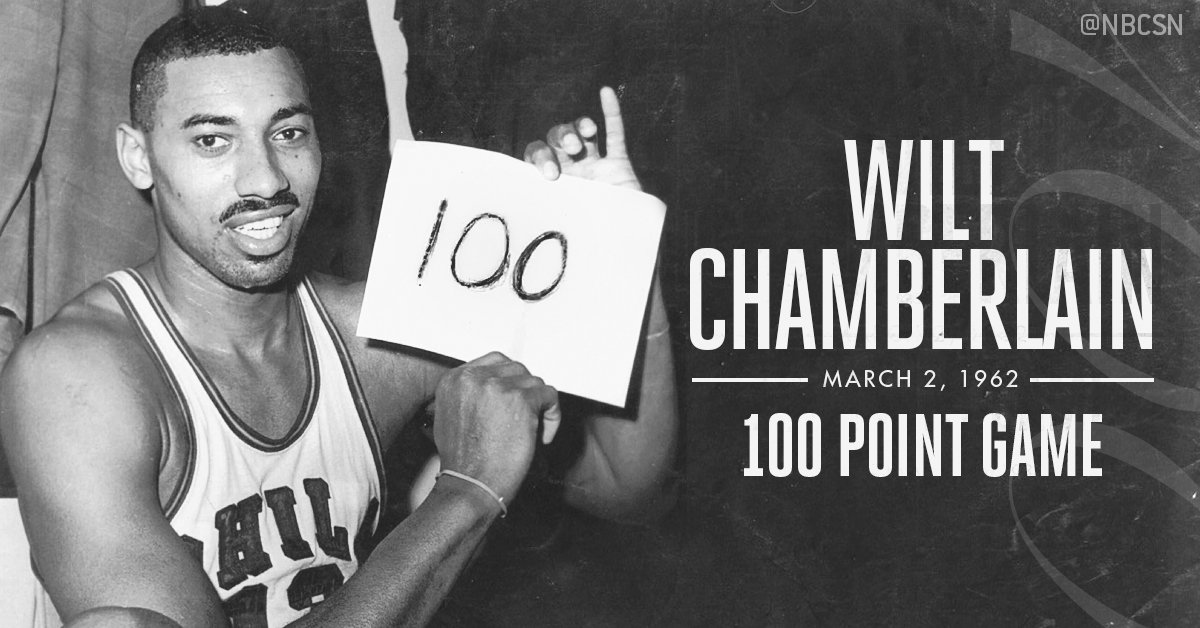 by Mrs. Sara Munk
by Mrs. Sara Munk
On March 2, 1962, Wilt Chamberlain played the greatest individual game of basketball in NBA history. Standing 7″1, 275 pounds, his powerful grace on the court was unstoppable. He scored 100 points on that day, a record that will almost definitely never be broken. He made 57% of his field goals and grabbed 25 rebounds. But the most astounding statistic was the 28 out of 32 (87.5%) foul shots that swished through the net. Why was this astounding? Because he was a notoriously awful free throw shooter, one of the worst in the league. The same man who could muscle his way to score at will was hopeless when left alone 15 feet away from the basket. Until the night of March 2nd, Wilt was a career 54% free throw shooter.

Before the 1962 season, Wilt decided to change his foul shooting form to underhand. He may have learned this from Miami University star Rick Barry, the most famous basketball player to always shoot his free throws in an underhand motion, a career 90% free throw shooter. Wilt’s 100 point performance could undoubtedly be attributed to shooting foul shots the way I did when I was 5 years old.
From a Physics perspective, an underhand motion makes a lot more sense. The arms naturally lay down on the sides of our bodies, and not in a shooting motion of bent elbows almost in line with our shoulders. Rick Barry once missed a total of 8 free throws in one season. To give some perspective, Stephen Curry missed over 50 in the 2017 year, also an astounding number. But Rick Barry only missed 8.
The most remarkable part of this whole story is that in the next season, Wilt Chamberlain stopped shooting underhand. He reverted back to embarrassing free throw statistics, shooting as low as 41%, less than half of the 87.5% he shot on the night of March 2, 1962.
Why did he do this? He didn’t like the way it made him look. The unstoppable force was suddenly stoppable. Foul him, and chances are, he was going to miss. All because one of the most confident celebrities of the time didn’t think it looked good.
For years, sociologists and social psychologists have grappled with the issue of why good ideas have a hard time taking off. One possible theory has to with crowds. People may somehow have their own belief systems that disappear when in a larger group. The dictated social norms of a class or community cloud the judgements of individual members, even to the extent that the one of the best basketball players of all time could have become the greatest. The underhand shot was simply not socially accepted. Even a man who signed the first $100,000 NBA contract and lived as he pleased, could not rid himself of the “granny shot” stigma.

What a powerful lesson this is on the eve of Rosh Hashana, the epitome of self-reflection. Spending ten days evaluating ourselves and our relationship with G-d leaves little room for excuses related to social norms. Yet, at the same time, we beseech G-d as a community. We come together as a team where the “thing to do” is to daven our hearts out and recognize the power of the One above. On this Rosh Hashana, Wilt Chamberlain has given us a whole lot to think about.
Sara Munk is Assistant Principal at Ulpanat Orot

